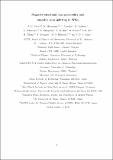Files in this item
Negative electronic compressibility and tunable spin splitting in WSe2
Item metadata
| dc.contributor.author | Riley, Jonathon Mark | |
| dc.contributor.author | Meevasana, Worawat | |
| dc.contributor.author | Bawden, Lewis | |
| dc.contributor.author | Asakawa, M. | |
| dc.contributor.author | Takayama, T. | |
| dc.contributor.author | Eknapakul, T. | |
| dc.contributor.author | Kim, T.K. | |
| dc.contributor.author | Hoesch, M. | |
| dc.contributor.author | Mo, S.-K. | |
| dc.contributor.author | Takagi, H. | |
| dc.contributor.author | Sasagawa, T. | |
| dc.contributor.author | Bahramy, M.S. | |
| dc.contributor.author | King, Phil | |
| dc.date.accessioned | 2016-03-21T00:01:14Z | |
| dc.date.available | 2016-03-21T00:01:14Z | |
| dc.date.issued | 2015-12 | |
| dc.identifier | 211102947 | |
| dc.identifier | 50d5f069-c232-4696-a511-077fa59054b9 | |
| dc.identifier | 84949323040 | |
| dc.identifier | 000366023700012 | |
| dc.identifier.citation | Riley , J M , Meevasana , W , Bawden , L , Asakawa , M , Takayama , T , Eknapakul , T , Kim , T K , Hoesch , M , Mo , S-K , Takagi , H , Sasagawa , T , Bahramy , M S & King , P 2015 , ' Negative electronic compressibility and tunable spin splitting in WSe 2 ' , Nature Nanotechnology , vol. 10 , pp. 1043-1047 . https://doi.org/10.1038/nnano.2015.217 | en |
| dc.identifier.issn | 1748-3387 | |
| dc.identifier.uri | https://hdl.handle.net/10023/8445 | |
| dc.description | This work was supported by the Engineering and Physical Sciences Research Council, UK (Grant Nos. EP/I031014/1, EP/M023427/1, EP/L505079/1, and EP/G03673X/1), TRF-SUT Grant RSA5680052 and NANOTEC, Thailand through the CoE Network. PDCK acknowledges support from the Royal Society through a University Research Fellowship. MSB was supported by the Grant-in-Aid for Scientific Research (S) (No. 24224009) from the Ministry of Education, Culture, Sports, Science and Technology (MEXT) of Japan. | en |
| dc.description.abstract | Tunable bandgaps1, extraordinarily large exciton-binding energies2, 3, strong light–matter coupling4 and a locking of the electron spin with layer and valley pseudospins5, 6, 7, 8 have established transition-metal dichalcogenides (TMDs) as a unique class of two-dimensional (2D) semiconductors with wide-ranging practical applications9, 10. Using angle-resolved photoemission (ARPES), we show here that doping electrons at the surface of the prototypical strong spin–orbit TMD WSe2, akin to applying a gate voltage in a transistor-type device, induces a counterintuitive lowering of the surface chemical potential concomitant with the formation of a multivalley 2D electron gas (2DEG). These measurements provide a direct spectroscopic signature of negative electronic compressibility (NEC), a result of electron–electron interactions, which we find persists to carrier densities approximately three orders of magnitude higher than in typical semiconductor 2DEGs that exhibit this effect11, 12. An accompanying tunable spin splitting of the valence bands further reveals a complex interplay between single-particle band-structure evolution and many-body interactions in electrostatically doped TMDs. Understanding and exploiting this will open up new opportunities for advanced electronic and quantum-logic devices. | |
| dc.format.extent | 5 | |
| dc.format.extent | 7104598 | |
| dc.language.iso | eng | |
| dc.relation.ispartof | Nature Nanotechnology | en |
| dc.subject | QC Physics | en |
| dc.subject | NDAS | en |
| dc.subject | BDC | en |
| dc.subject | R2C | en |
| dc.subject.lcc | QC | en |
| dc.title | Negative electronic compressibility and tunable spin splitting in WSe2 | en |
| dc.type | Journal item | en |
| dc.contributor.sponsor | The Royal Society | en |
| dc.contributor.sponsor | EPSRC | en |
| dc.contributor.sponsor | EPSRC | en |
| dc.contributor.institution | University of St Andrews. School of Physics and Astronomy | en |
| dc.contributor.institution | University of St Andrews. Condensed Matter Physics | en |
| dc.identifier.doi | 10.1038/nnano.2015.217 | |
| dc.description.status | Peer reviewed | en |
| dc.date.embargoedUntil | 2016-03-21 | |
| dc.identifier.grantnumber | UF120096 | en |
| dc.identifier.grantnumber | EP/M023427/1 | en |
| dc.identifier.grantnumber | EP/I031014/1 | en |
This item appears in the following Collection(s)
Items in the St Andrews Research Repository are protected by copyright, with all rights reserved, unless otherwise indicated.

